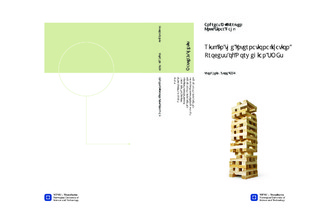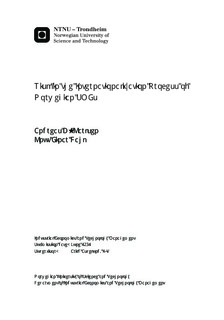| dc.description.abstract | By studying the internationalization process of four Norwegian SMEs involved in a governmental-backed internationalization support program, this case study aims at uncovering how SMEs identify, evaluate and mitigate risks in the internationalization process. This is a topic of high relevance for managers, policy-makers and researches. Each group will be addressed in this abstract. The risk assessments made during the course of the internationalization process is found be of a muddling-through nature, with no real separation between risk identification and risk evaluation processes, and both processes are found to be interlinked and cyclical. Resource scarcity is found to be a highly influential factor, making the firms consider only a subset of what is perceived to be feasible entry modes in the risk identification phase. Further, only a subset of risk factors - identified as key risk factors - are thoroughly evaluated. When evaluating the overall risk level, risk is assessed in terms of potential loss associated with a market entry failure and evaluated against a risk tolerance frontier – determined by the firm’s ability to handle a financial loss. The risk mitigation efforts are dominated by a trade-off between the perceived necessary commitment for successful entry, and the desire to commit minimal resources. For managers, the most important contribution of this study is how small firms can handle the significant resource demands of an internationalization process, and how small firm internationalization is vastly different from large firm internationalization. The reductionist approach pursued by the case firms limits the complexity and resource demands of the internationalization process, and this is further reduced by third-parties which provide relevant information, experience and decision-making support. The case study also illustrates the applicability of muddling-through processes in risk assessment– yielding an alternative to larger firms’ more formal and structured processes. For policy makers, the case study accentuates the vital role of government-backed internationalization programs for small firm internationalization. The internationalization programs are found to both motivate and facilitate the internationalization process of the case firms. In the function as facilitator, the programs reduce both resource- and psychological barriers by providing information, network referrals and financial support. The role as motivator is directly linked to the program’s ability to reduce internationalization barriers, by allowing firms that are initially reluctant to engage in international activities to discover that international expansion is an achievable goal. The fact that two out of four case firms never would have considered their current foreign market expansion unless contacted by the internationalization program, should give an incentive for continuation of these programs. For researchers, the case study illustrates how research on risk in the internationalization process has been neglected. The current research streams focus on pattern explanation of small firm internationalization following successful entry, rather than how small firms actually identify, evaluate and mitigate risk during this process. This indicates a need for internationalization process models to more accurately describe the risk assessment process conducted by practitioners in small, internationalizing firms. In order to understand the role of risk in the internationalization process, the models should be developed based on empirical research on how uncertainty affects resource commitment at market entry and managerial decision-making. | nb_NO |

